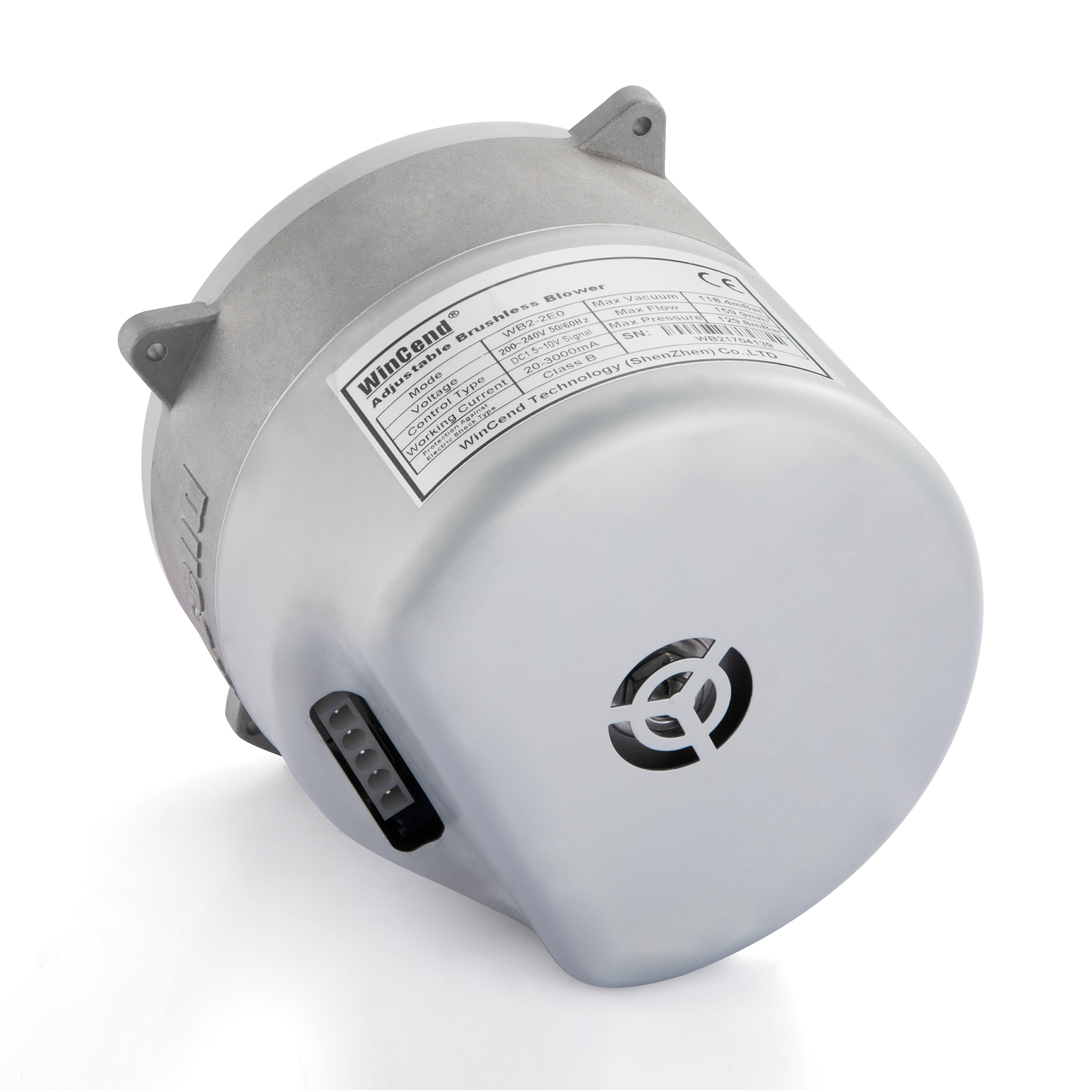The AC Variable Frequency Air Pump represents a significant advancement in air compression technology, combining the efficiency of alternating current (AC) motors with the flexibility of variable frequency drives (VFDs). This innovative design not only enhances the performance of air pumps but also offers numerous advantages over traditional fixed-frequency systems. The WinCend AC variable frequency air pump not only enhances system performance but also contributes to sustainability by minimizing energy waste, making it a key component in modern, efficient machinery and equipment.

Working Principle
AC Motor Fundamentals
At the heart of the AC Variable Frequency Air Pump lies an AC induction motor. These motors convert electrical energy into mechanical energy through the interaction between rotating magnetic fields and conductor coils within the motor. Traditional AC motors operate at a fixed speed determined by the power supply frequency, typically 50 or 60 Hz.
Variable Frequency Drive (VFD)
A Variable Frequency Drive (VFD) is a power conversion device that modifies the frequency and voltage supplied to the AC motor. By varying these parameters, the VFD can control the motor's speed and torque over a wide range. This ability to adjust the motor's operating point is crucial for optimizing the performance of air pumps.
Air Pump Operation
In an AC Variable Frequency Air Pump, the VFD adjusts the motor speed in response to changes in demand. When the system requires more airflow, the VFD increases the motor speed, thereby boosting the pump's output. Conversely, during periods of lower demand, the motor speed decreases, reducing energy consumption and wear and tear on the pump components.
The VFD also provides soft starting and stopping capabilities, which minimize mechanical stress on the motor and pump. By gradually increasing or decreasing the motor speed, the VFD eliminates the high inrush currents and mechanical shock associated with traditional starting methods.
Sensor Feedback and Control Algorithms
For precise control, AC Variable Frequency Air Pumps often incorporate sensors to monitor system parameters such as pressure, flow rate, and temperature. These sensors feed data into a control system, which uses advanced algorithms to adjust the VFD settings in real-time. This closed-loop control ensures that the air pump operates at optimal efficiency under varying conditions.
Advantages
Energy Efficiency
One of the most significant advantages of AC Variable Frequency Air Pumps is their energy efficiency. By adjusting the motor speed to match the actual demand, these pumps can significantly reduce energy consumption compared to fixed-speed systems. This energy savings translates into lower operational costs and a reduced carbon footprint.
Enhanced Performance
Variable frequency operation allows AC air pumps to maintain consistent airflow and pressure, even under fluctuating loads. This capability ensures that the pump operates within its optimal performance range, improving reliability and extending the lifespan of the equipment.
Noise Reduction
By operating at lower speeds during periods of low demand, AC Variable Frequency Air Pumps generate less noise. This reduction in noise levels can improve the working environment for operators and reduce the potential for noise pollution in nearby areas.
Improved Motor Life
The soft starting and stopping capabilities of VFDs minimize mechanical stress on the motor, reducing wear and tear and extending its lifespan. Additionally, by operating within the motor's optimal efficiency range, AC Variable Frequency Air Pumps help to prevent overheating and other potential damage.
Flexibility and Scalability
The ability to adjust the motor speed over a wide range makes AC Variable Frequency Air Pumps highly flexible and scalable. These pumps can be easily adapted to meet the changing needs of various applications, from small-scale laboratory systems to large-scale industrial processes.
Remote Monitoring and Control
Many AC Variable Frequency Air Pumps come equipped with communication interfaces that allow for remote monitoring and control. Operators can access real-time data on system performance, adjust settings remotely, and troubleshoot issues without needing to be physically present at the site. This capability enhances system reliability and reduces downtime.
Conclusion
AC Variable Frequency Air Pumps represent a significant advancement in air compression technology, offering numerous advantages over traditional fixed-frequency systems. By combining the efficiency of AC motors with the flexibility of variable frequency drives, these pumps can significantly improve energy efficiency, performance, and reliability. Additionally, their noise reduction capabilities, extended motor life, and scalability make them an ideal choice for a wide range of applications. As the demand for more efficient and sustainable technologies continues to grow, WinCend AC Variable Frequency Air Pumps are poised to play a crucial role in shaping the future of air compression.
https://www.wincendtech.com/working-principle-and-advantages-of-ac-variable-frequency-air-pump.html








